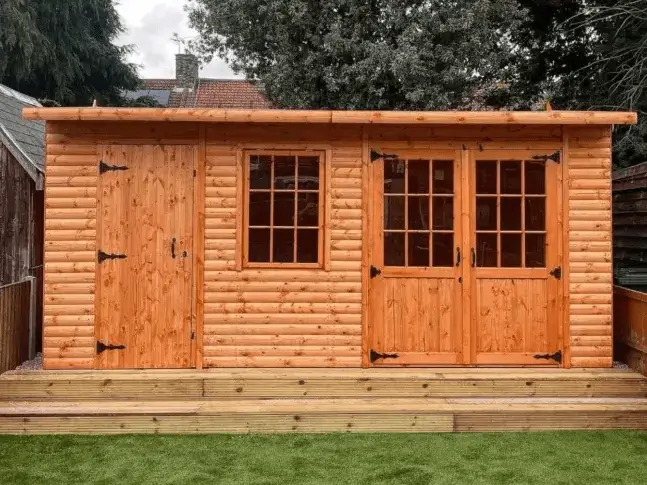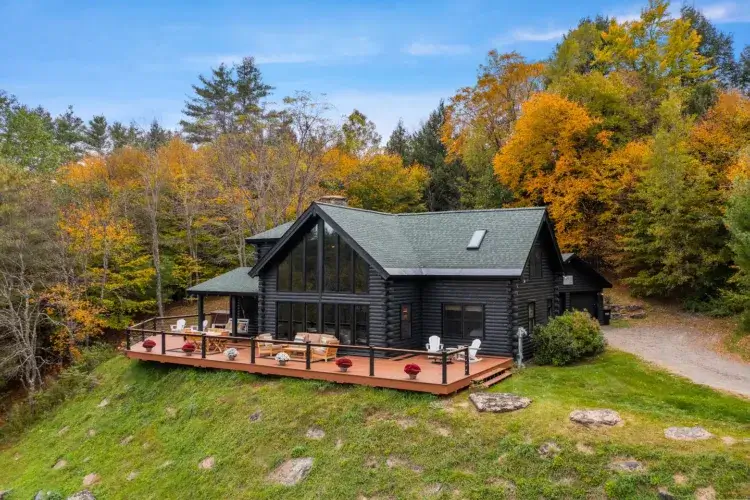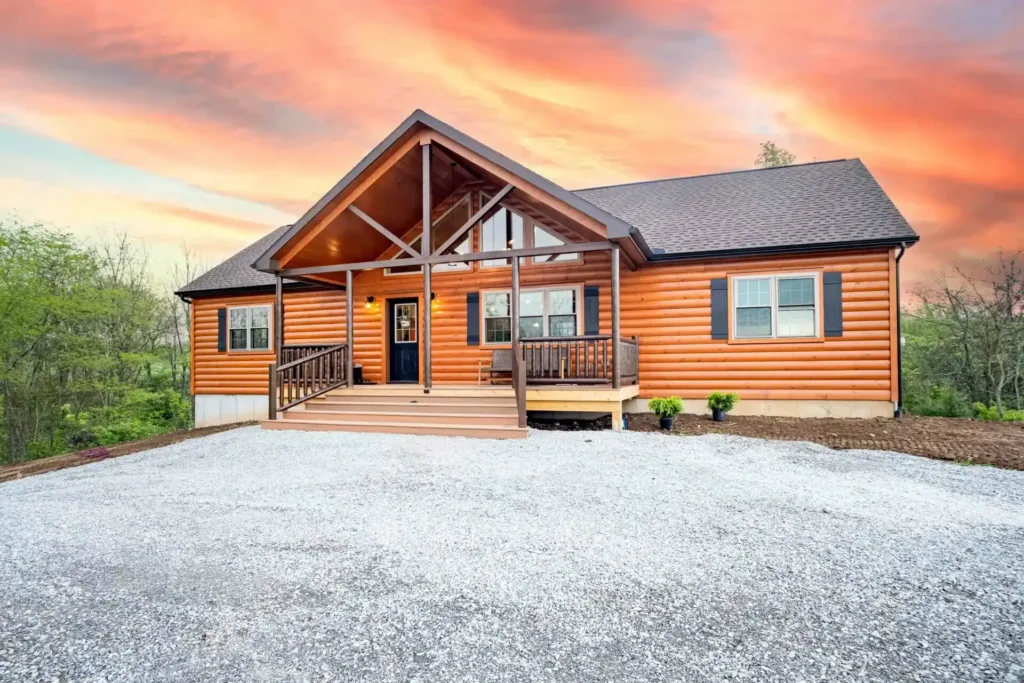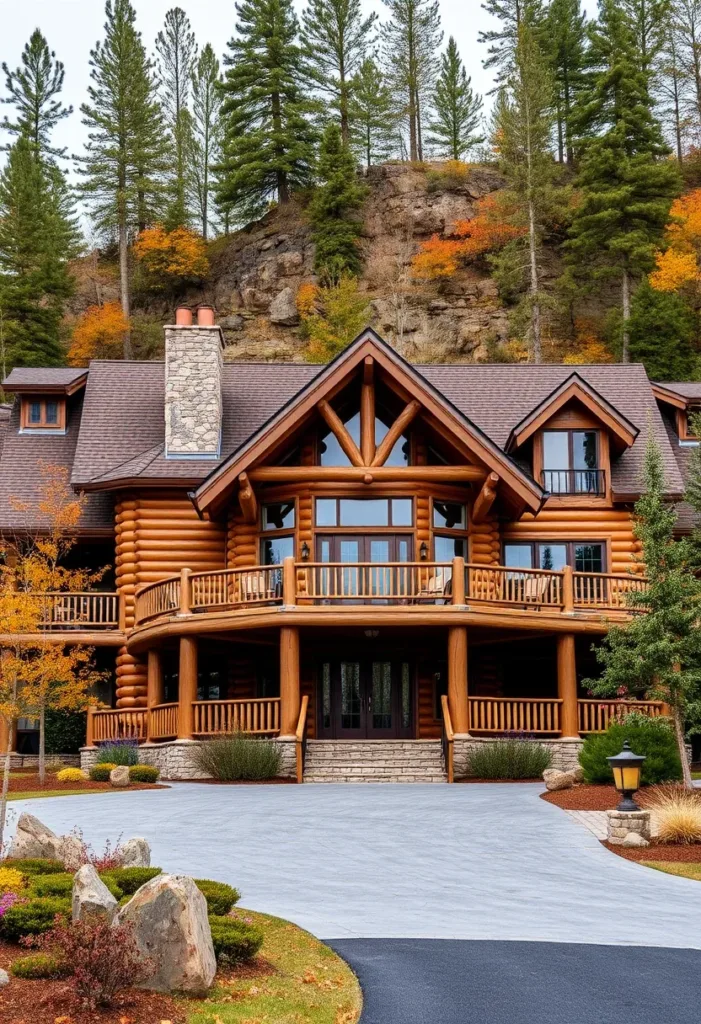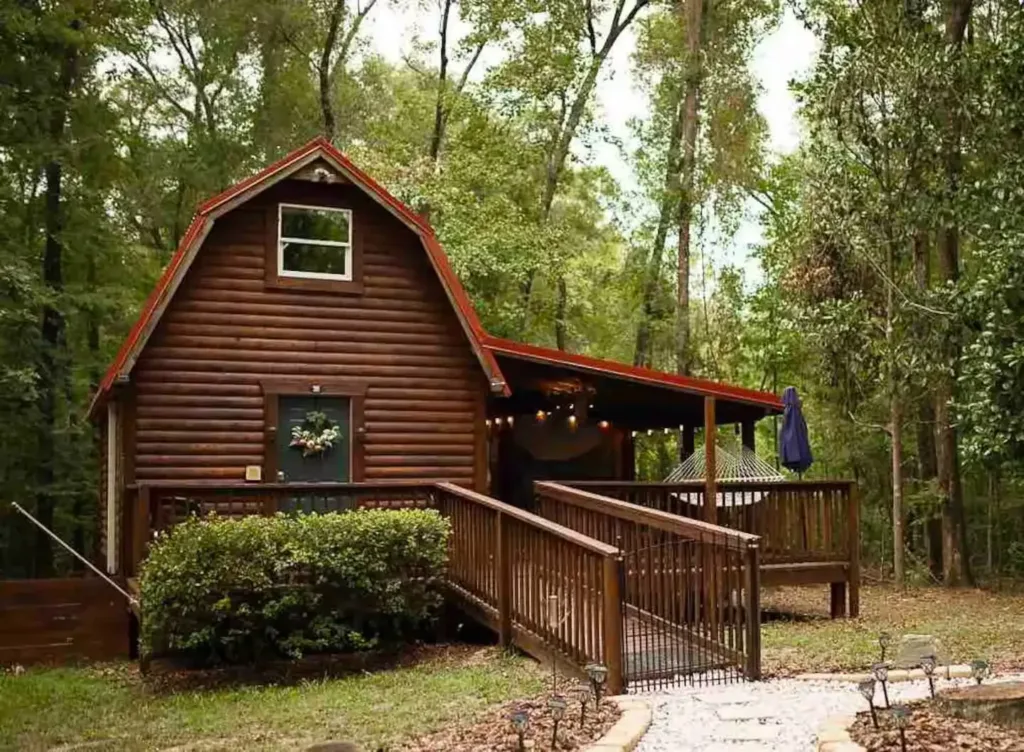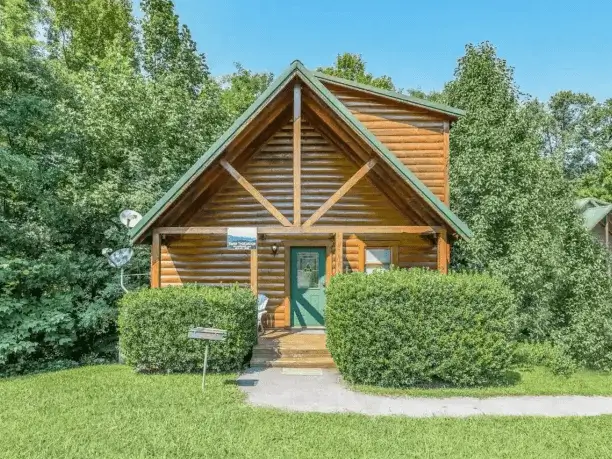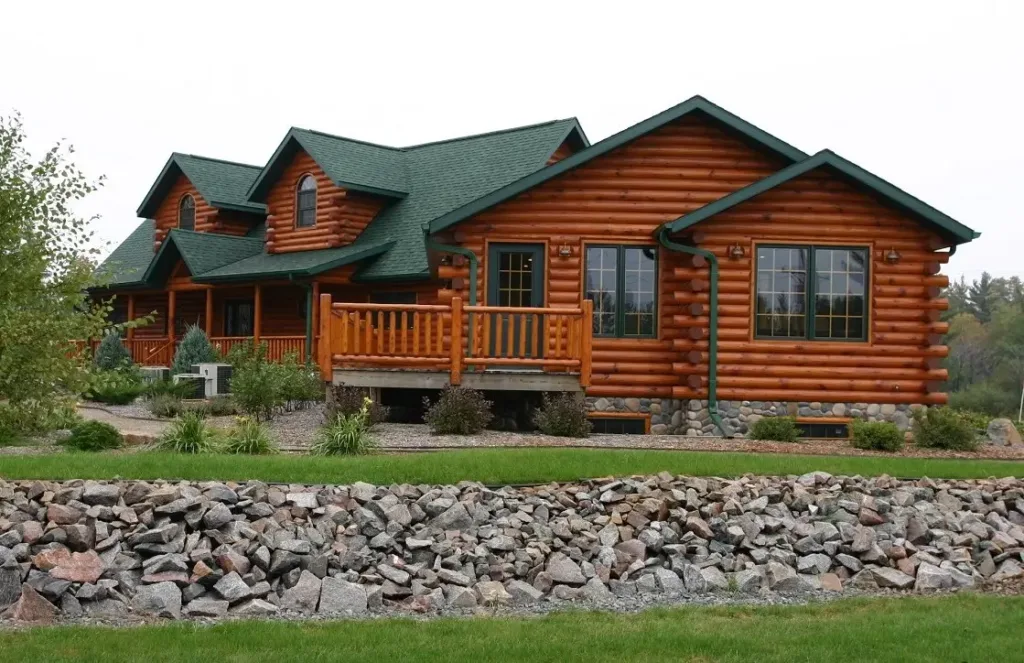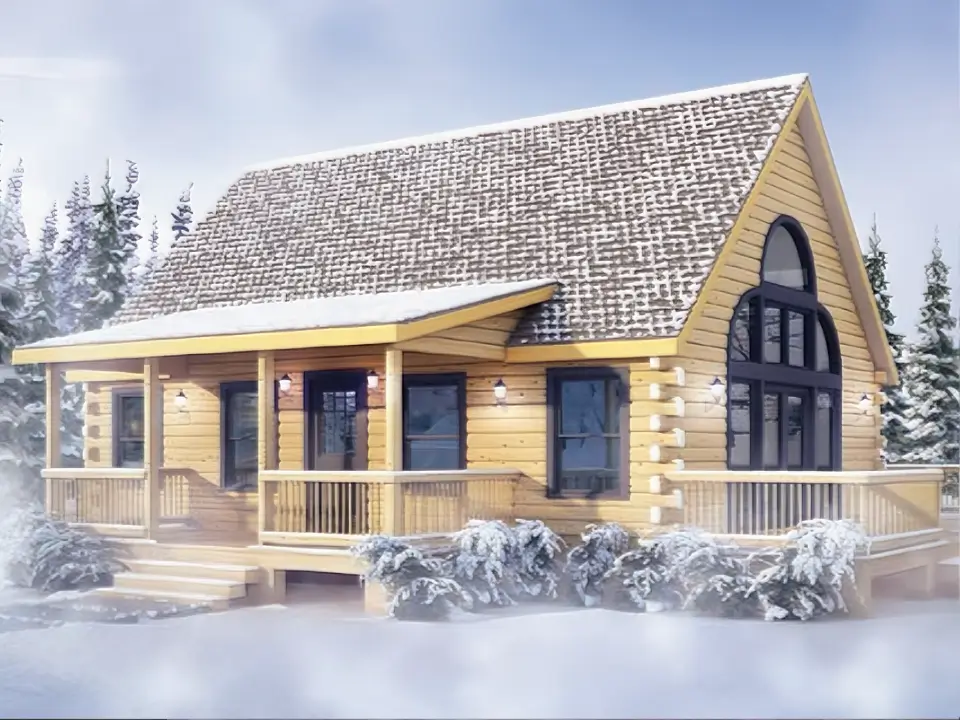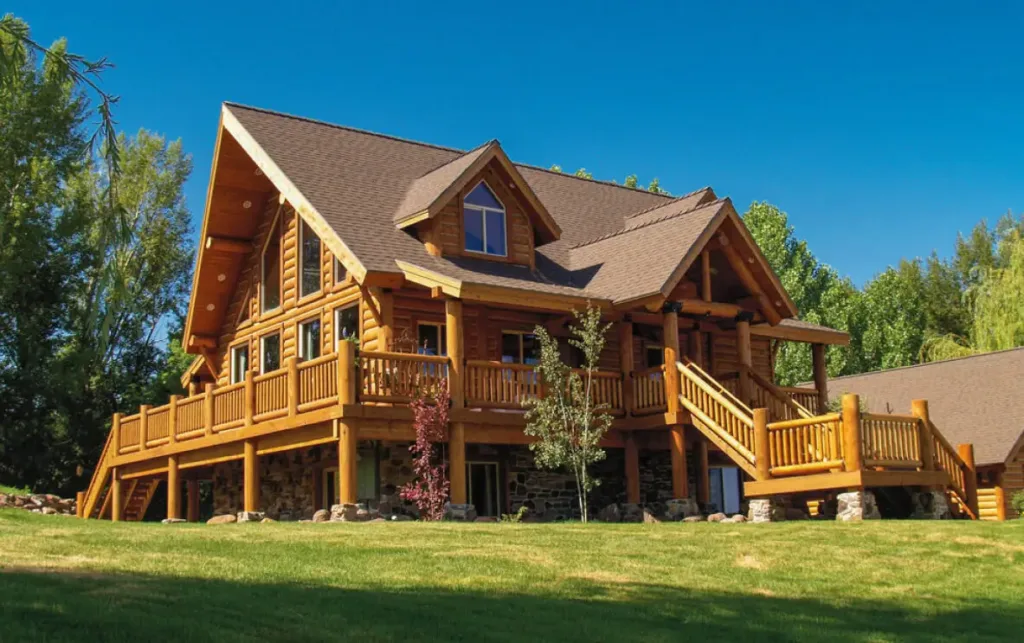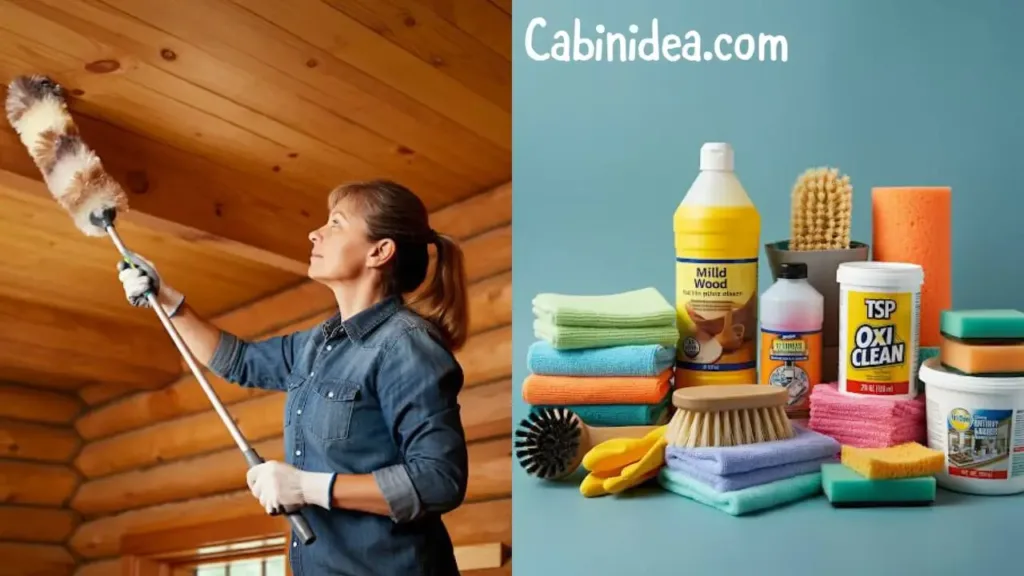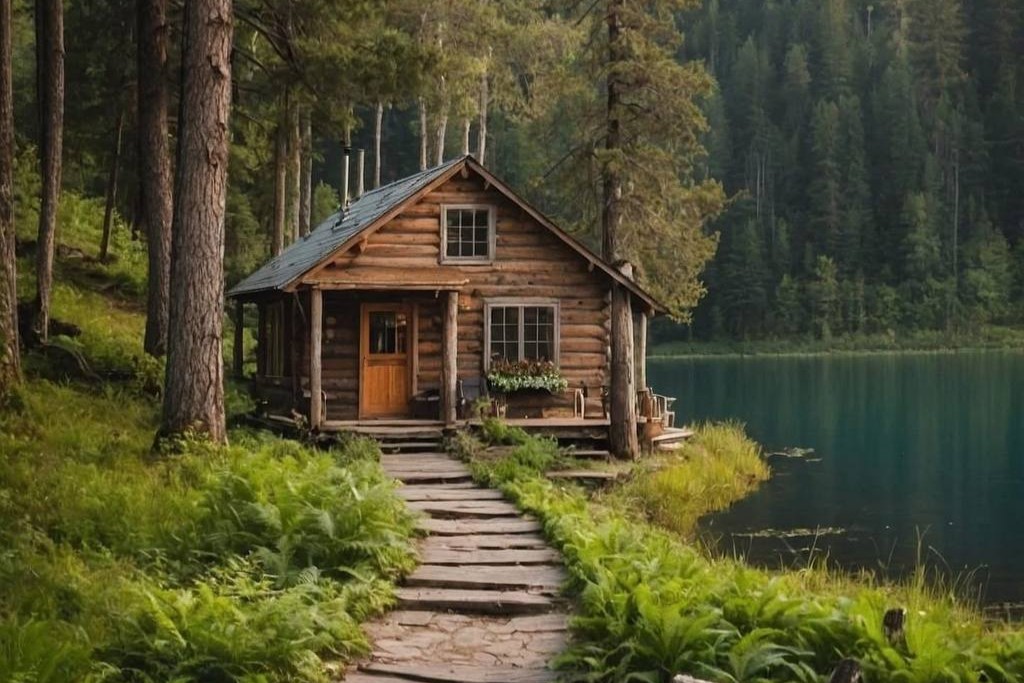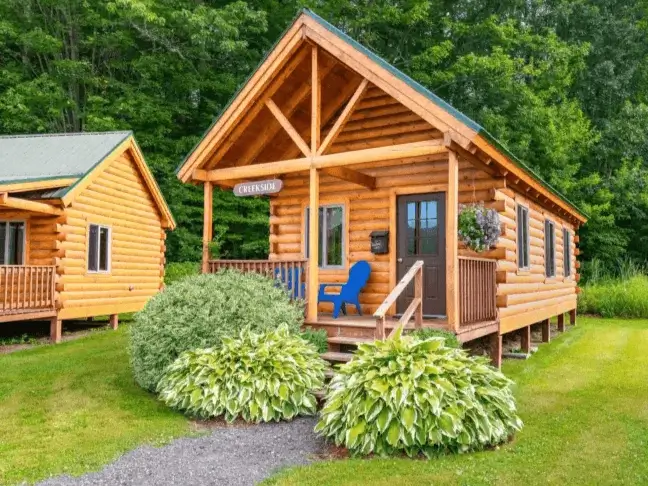Shed log cabins represent a stunning transformation of the humble backyard shed, making the dream of a rustic, quiet escape more accessible than ever. These charming and versatile structures offer a perfect blend of form and function, providing a much-needed extra room that feels like a world away, just steps from your back door.
Whether you’re envisioning a quiet home office, a creative art studio, a personal gym, or simply a cozy sanctuary to unwind, a shed log cabin is a lasting investment in your home and lifestyle. In this guide, we’ll walk you through everything you need to know—from planning and costs to construction and long-term care—to bring your backyard cabin dream to life.
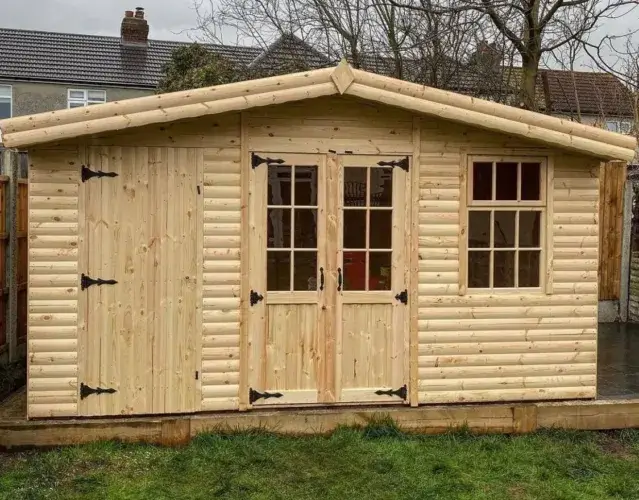
The Endless Possibilities: What Can You Use a Shed Log Cabin For?
Long gone are the days of sheds being used just for dusty lawnmowers. A well-designed shed cabin can be anything you imagine. We’ve seen homeowners create incredible, functional spaces, including:
- A Dedicated Home Office: Create a quiet, professional space to boost productivity while working from home.
- An Artist or Craft Studio: Find your inspiration in a light-filled space dedicated to your creative pursuits.
- A Personal Wellness Retreat: Design the perfect spot for your yoga practice, meditation, or home gym equipment.
- A Cozy Guest House: Offer a private and charming space for visiting friends and family.
- The Ultimate “She-Shed” or “Man-Cave”: Carve out a personal sanctuary for hobbies, relaxation, or entertainment, and you can find plenty of rustic cabin interior design ideas to bring it to life.
- A Kids’ Playhouse: Give your children a magical and durable play space of their very own.
- A dedicated entertainment space, like one of these creative bar log cabin ideas.
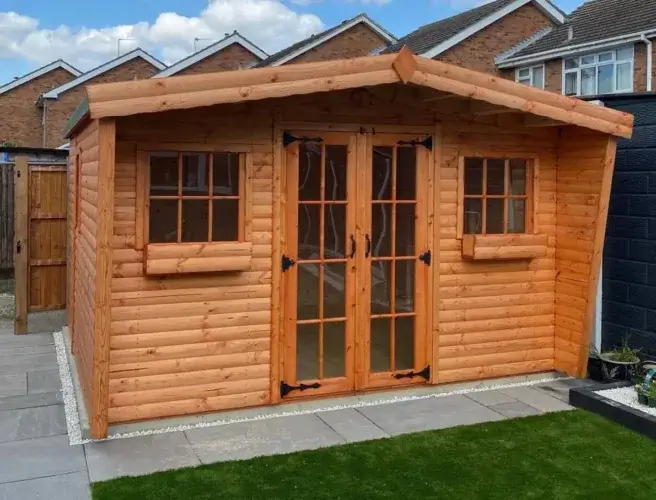
Planning Your Perfect Shed Cabin: Key Decisions to Make First
The key to a successful project is thoughtful planning. Rushing these initial decisions is a common mistake that can lead to regret later.
Kits vs. Custom Build: Which Is Right for You?
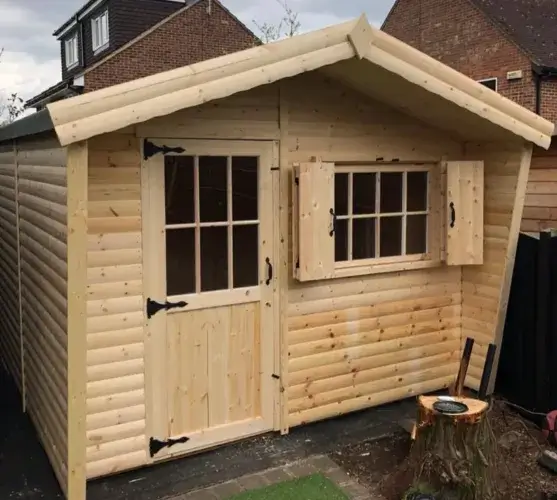
One of the first choices you’ll face is whether to use a prefabricated kit or opt for a full custom build. Both have their merits.
| Feature | Prefab Shed Log Cabin Kits | Custom-Built Shed Cabins |
|---|---|---|
| Cost | Generally more affordable and predictable. | Higher upfront cost due to labor and design fees. |
| Time | Much faster; kits can often be assembled in days. | Significantly longer, from design to final construction. |
| Customization | Limited to the options offered by the manufacturer. | Virtually limitless; designed to your exact specs. |
| Skill Level | Often designed for a confident DIYer. | Requires professional builders and contractors. |
Our Tip: For most homeowners, a high-quality kit offers the best balance of cost, speed, and design, and you can maximize the space inside with some clever storage solutions for tiny spaces.
What Are the Best Materials for a Shed Log Cabin?
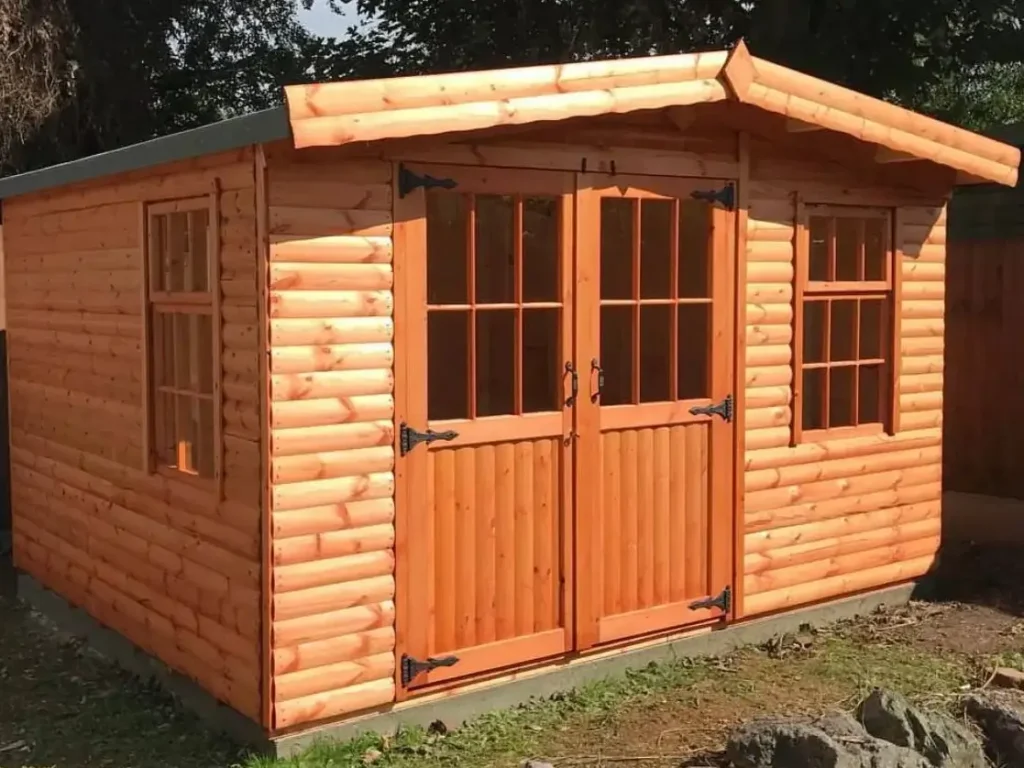
The quality of your cabin starts with the quality of its materials.
- Wood Type: Pine and Spruce are popular and cost-effective choices, offering that classic log cabin look. Cedar is a premium option, prized for its natural resistance to rot and insects.
- Log Thickness: You’ll often see options like 28mm, 44mm, or even 70mm. For a structure you plan to use year-round, we recommend at least a 44mm thickness. This provides a sweet spot of good insulation and structural integrity without the significant cost jump of thicker, residential-grade logs.
- Roofing: While standard felt is often included in kits, upgrading to asphalt shingles or a metal roof will provide far superior longevity and weather protection.
- Insulation: If you plan to use the cabin in cooler weather, don’t skip on insulation for the floor and ceiling. This is crucial for maintaining a comfortable temperature and energy efficiency.
The Foundation: The Most Critical Step
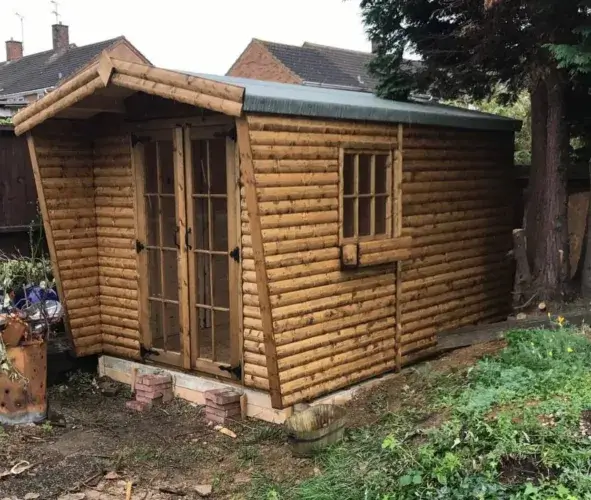
A shed log cabin is only as strong as its foundation. From our experience, nearly every major post-build issue—from doors that won’t close to uneven floorboards—can be traced back to a foundation that wasn’t perfectly level from the start. An uneven or unstable base will lead to shifting, problems with doors and windows, and potential structural failure.
- Concrete Slab: The most durable and permanent option.
- Concrete Piers: A good choice for sloped ground.
- Compacted Gravel Pad with Skids: This is a very common and effective “floating” foundation for many pre-built and kit cabins. The key is ensuring the pad is perfectly level.
Navigating Costs, Permits, and Installation
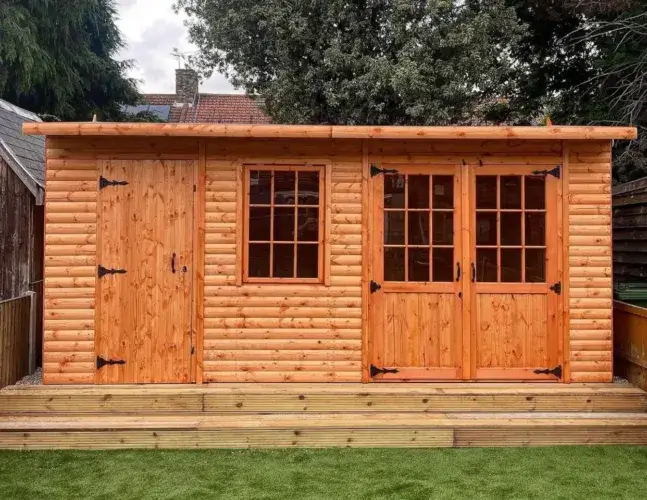
The practical side of the project is where careful budgeting and research pay off.
How Much Does a Shed Log Cabin Cost in 2025?
Prices vary widely based on size, materials, and level of customization.
| Cabin Type | Typical Size | Estimated Cost (Materials/Kit Only) |
|---|---|---|
| Small Basic Kit | 8′ x 10′ | $3,000 – $6,000 |
| Mid-Size Insulated Kit | 12′ x 16′ | $7,000 – $15,000 |
| Large Custom Cabin | 16′ x 24’+ | $20,000+ |
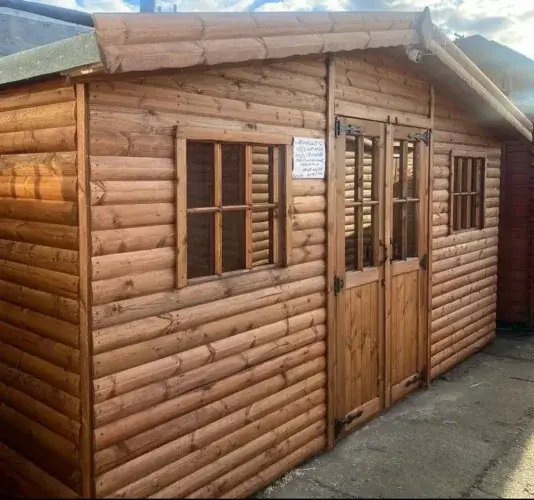
Remember to budget for “hidden” costs:
- Foundation work ($500 – $3,000+)
- Permits (Varies by location)
- Electrical wiring ($1,000 – $2,500+)
- Interior finishing (paint, flooring) and furnishings.
For those exploring budget-friendly projects, many prefab homes for under $50k share similar construction principles and can offer further inspiration.
The Permit Question: Do You Need One?
The short answer is: always check. While some small sheds under a certain size (e.g., 100 or 120 sq. ft.) may not require a permit in some areas, this is not a safe assumption. Factors that often trigger the need for a permit include:
- Exceeding a local size threshold.
- Connecting the structure to electricity or plumbing.
- Building on a permanent foundation.
A quick call to your local municipal building department is the single most important step you can take. Taking ten minutes to do this can save you from potentially thousands of dollars in fines and the headache of having to move or modify your cabin later.
How Do You Maintain a Shed Log Cabin and Protect Your Investment?
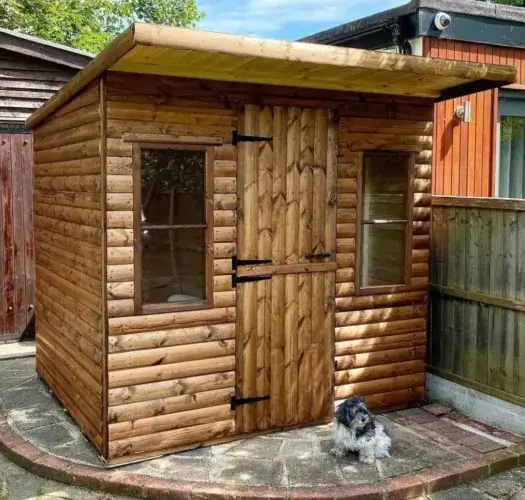
A wood cabin is a living structure that requires regular maintenance to stay beautiful and sound.
- Seal and Stain: This is your first line of defense against moisture and UV damage. Plan to re-apply a high-quality exterior stain and sealant every 3-5 years, depending on your climate’s harshness (more often in areas with heavy rain or intense sun).
- Annual Inspection: Each year, walk around your cabin and look for any gaps in the log chinking, signs of pests, or splash-back from rain at the base. Check the roof for any damaged shingles.
- Keep it Clean: Gently wash the exterior walls with a mild detergent annually to remove dirt and prevent mildew growth.
- Ensure Good Drainage: Make sure gutters are clear and that the ground around the foundation slopes away from the cabin to keep water from pooling at the base.
Your Shed Log Cabin Questions, Answered
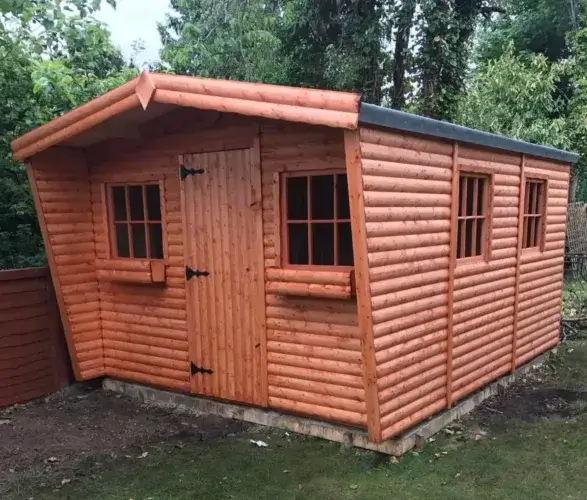
1. Are shed log cabins difficult to build yourself?
Many kits are designed for DIY assembly by two people with moderate construction skills. They often come with pre-cut, numbered logs and detailed instructions. However, if you are not comfortable with this scale of work, hiring a professional installer is a wise investment.
2. Can I get a shed log cabin with a loft or a porch?
Absolutely! Many manufacturers offer models with built-in porches for outdoor seating or lofts for extra storage or sleeping space. These are excellent ways to maximize the functionality of your cabin.
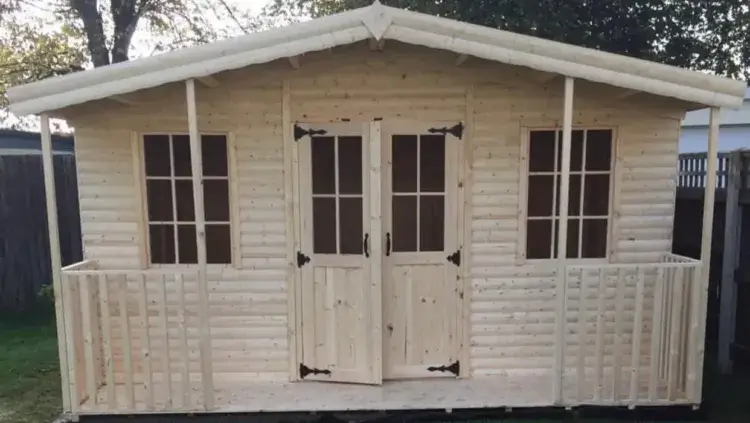
3. How do you run electricity to a backyard shed cabin?
This should always be done by a licensed electrician, a recommendation supported by safety experts like the Electrical Safety Foundation International (ESFI). They will typically run a buried armored cable from your home’s main electrical panel to a new sub-panel inside the cabin, ensuring the entire installation is safe and up to code.
4. How do I prevent rot in a shed log cabin?
The three keys are: a solid foundation that keeps the logs off the ground, a quality roof with an adequate overhang, and consistent maintenance with a water-repellent stain and sealer.
5. How long do shed log cabins last?
With a proper foundation and consistent maintenance (especially re-sealing the wood every 3-5 years), a quality shed log cabin can easily last for 15-25 years or even longer. Its lifespan is directly tied to how well it’s protected from moisture.
6. Are shed log cabins suitable for year-round use?
Yes, but it depends on the build and your climate. For year-round comfort, you must choose a model with thicker logs (44mm or more), and invest in floor and roof insulation. You will also need to add a safe power source for heating and cooling, such as a mini-split system.
7. What’s the main difference between a log cabin shed and a regular shed?
The primary differences are construction and intended use. A regular shed is typically a simple-paneled structure designed purely for storage. A log cabin shed is built with thicker, interlocking logs, designed to be a more durable and comfortable space that can be finished and insulated to be used as a room, like an office or studio.
8. Where is the best place to buy a shed log cabin kit?
You have several options, each with its own benefits. You can buy directly from specialized manufacturers online for the widest selection, from large home improvement stores for convenience, or from local, independent shed builders who may offer more custom, hands-on service.
Ultimately, adding a shed log cabin to your backyard is more than just a construction project—it’s an investment in your home, your hobbies, and your quality of life. With the thoughtful planning outlined in this guide, the right materials, and a commitment to proper care, you can create a beautiful and functional retreat that will serve you well for years to come. Your perfect backyard escape is well within reach.

